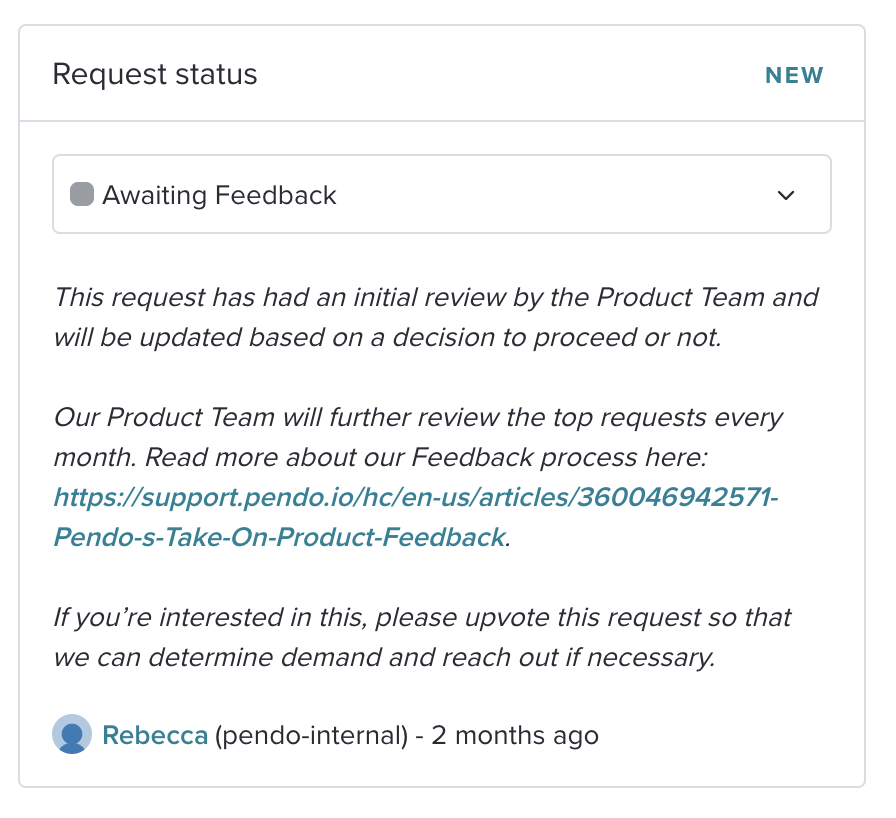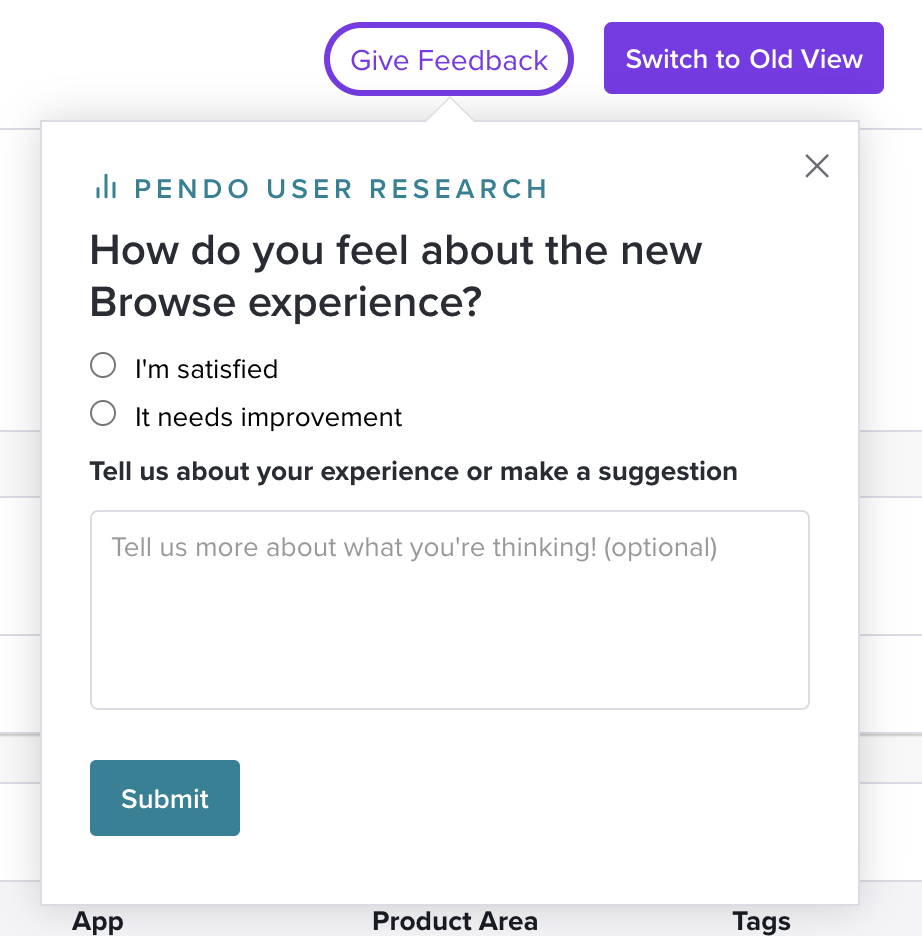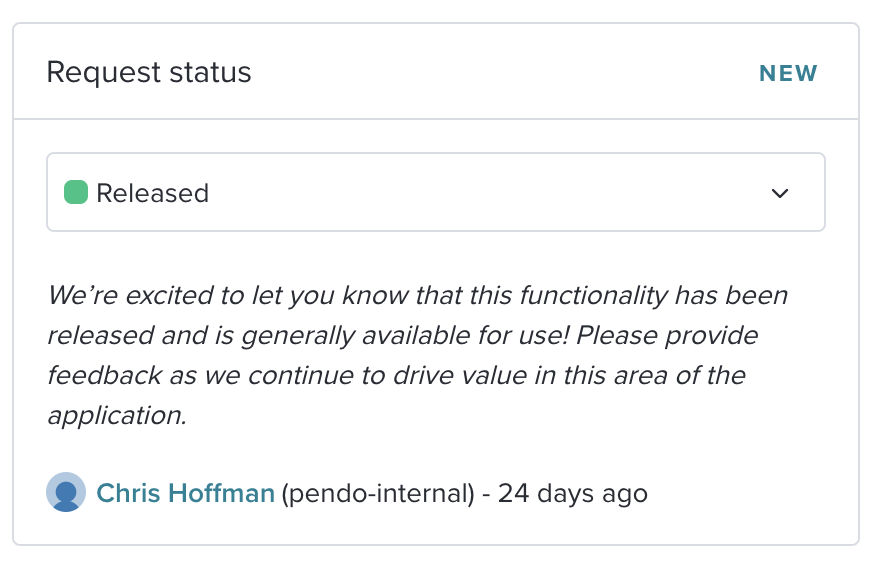As a member of the product operations (also known as product ops) team at Pendo, I’m in the unique position to collaborate closely with product managers (PMs), while also having a direct line of contact with our customers. A core tenet of product ops is maintaining a two-way stream of communication. We tell our customers about all the cool innovation happening inside Pendo’s products, and they tell us how they’re feeling, in their own voices.
Every product person wants to be this close to their customers—so they can hear user pains and successes first-hand, then leverage these findings to inform or validate the roadmap.
But this two-way workstream also presents the eternal challenge of the product world: How do we scale these conversations and draw meaningful insights from them? Here are a few ways we do it at Pendo—and the tools we use to help.
Setting expectations and collecting feedback at scale
We love hearing from our customers. As the everyday users of our products, we need their intel and want to understand their experiences so we can continue iterating and improving our products. But as our organization scales, it becomes more and more difficult for us to have all these conversations in person or in one-on-one settings.
Our Pendo Feedback portal helps get all our customers’ voices and suggestions in one place, and allows us quickly to draw early insights—even during the first phase of triage, before we build out requests in our product roadmap.
Another way we facilitate feedback at scale is through a Product Feedback Policy. Pendo’s policy is live on our Knowledge Base and is also linked in our status response (an automated status update sent as an email to customers who submit feedback, detailing where their request is in its lifecycle). Whenever a request is reviewed by the product ops team, our Product Feedback Policy reminds our customers what our feedback process is and what they can expect next. This helps create transparency in our process, builds trust with our users, and sets us up for scale.

Analyzing and elevating product feedback
Between Pendo Feedback reports and Net Promoter Score (NPS) responses collected from our customers, we have access to a ton of qualitative and quantitative data that helps us paint a picture of our users’ experience.
Pendo Feedback reports aggregate all the data we care about—including our users’ votes and priorities, as well as their associated value—and give us a high-level overview of the requests we should be paying the most attention to. For example, our top requests report indicates where our users are feeling the most pain, while our inactivity report tells us what users most sorely wanted before they stopped logging into Pendo. We can then use these insights to get ahead of or address recurring customer challenges; understand when, why, and how things went askew with inactive users; and dig deeper into both the qualitative and quantitative data within Pendo to understand where to take the product next.
We also partner with a cross-functional team of pre-sales and post-sales collaborators who do a fantastic job of representing the voices of our customers (VoC). They centralize their findings in Pendo Feedback and use request tags representing their various departments to denote what they’re hearing most frequently. This helps us understand what hurdles our customers are facing, at which stages of their lifecycle.

Research and making product decisions
So now that we have all this awesome data about our customers and their needs, what do we do with it? How do we decide what’s important and then take action?
Product feedback data serves us in two ways. Sometimes it helps us uncover new insights which lead to new research initiatives and planning motions. And sometimes it serves to validate what we’re already working on or have planned for development.
If our customers are requesting things in areas we plan to work on, we can kick off conversations with them and include them in our discovery process. With these users identified, our PMs and user researchers may book calls, launch guides, or send out polls to conduct deeper research and enhance the data we already have. This way, our customers’ voices contribute directly to our roadmap.
Continuously iterating
We love launching new features we know our customers will love. But this doesn’t mean our work is done once the new functionality goes live. Both during and after launch, we continue to solicit feedback to make sure our data doesn’t become stale.
We launch features into a beta state with in-app research guides (guides used by our user research and experience teams to solicit customer feedback) and surveys—giving our customers a direct line of communication to our PMs. Pendo’s analytics enriches this qualitative feedback and shows us how new features are being leveraged, so we can validate that they’re having the impact we predicted they would and continue to learn how we can further improve them.

When we launch a new feature to all of our customers, we announce it with an in-app guide and release the associated feature request in Pendo Feedback—with an invitation to open new feature requests for anyone who still has suggestions on how we can improve.

Getting started with a feedback process or VoC program doesn’t have to be daunting—and, when done right, yields incredible benefits for teams across the organization (from product to customer success).
With a unified feedback platform, a little planning and expectation-setting, clear workstreams for analyzing and elevating product feedback at scale, and a mindset of continual iteration and learning, you’ll start making more informed product decisions and building stronger (and happier) customer relationships.


